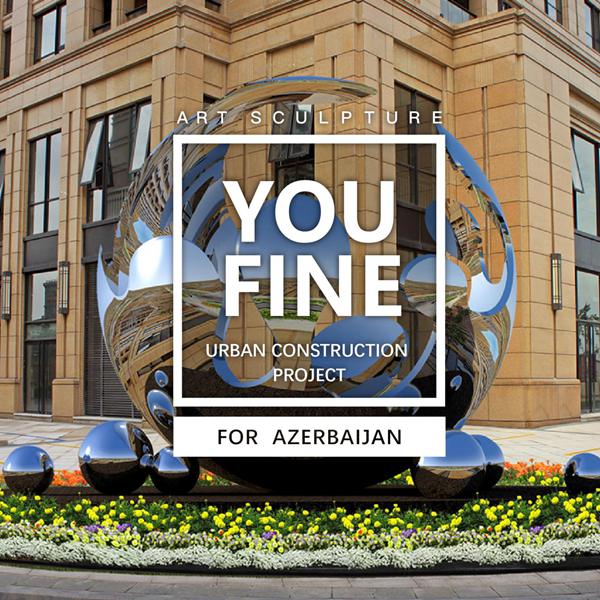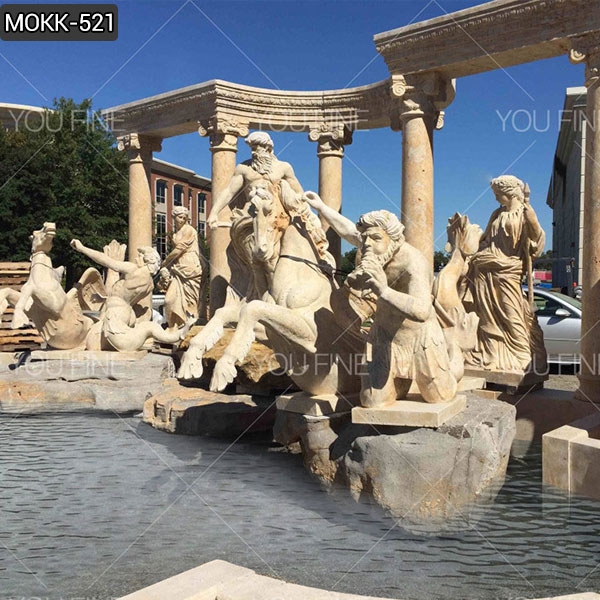As you stroll through city streets, you might stumble upon sculptures of various shapes and forms in squares, subway exits, or in front of commercial complexes. These sculptures aren’t isolated pieces of art; they embody the soul of a city. Regardless of era, urban sculptures uniquely influence the city’s character and accompany people’s daily lives.
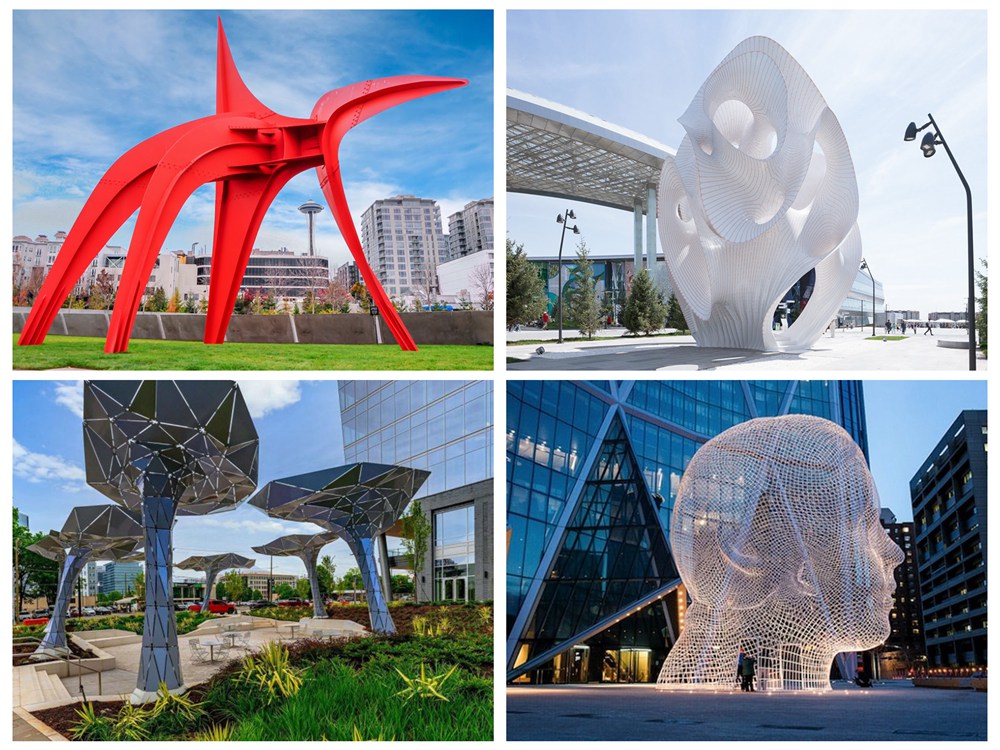
What is Urban Sculpture?
Urban sculpture refers to sculptures placed in public urban spaces. It encompasses a variety of forms, including square sculptures, park sculptures, street sculptures, and architectural sculptures.
Unlike conventional sculpture, urban sculpture emphasizes artistic aesthetic value, adaptability to the urban environment, public interaction, and expression of urban culture.
It can be commemorative, commemorating historical figures and events; decorative, adding an artistic atmosphere to the city; or functional, providing practical benefits such as rest and guidance, becoming a vital link between urban space and the lives of citizens.
Common Materials and Styles of Urban Sculpture
Different materials and design styles determine the visual impact and cultural connotations of urban sculptures. The following table summarizes the most common materials and design styles used in urban sculptures:
| Category | Subtype | Characteristics | Suitable Scenarios |
| Common Materials | Stone (Marble, Granite, etc.) | Thick texture, corrosion resistance, long service life, with natural marble veins, and elegant temperament | Commemorative sculptures, main square sculptures, classical-style scenes |
| Metal (Stainless Steel, Bronze, Cast Iron, etc.) | Stainless steel has a bright luster and a strong, modern sense; bronze has a warm texture and is easy to form a unique patina; Corten steel has a rusty surface and excellent corrosion resistance | Modern urban landmarks, commercial complex sculptures, and outdoor long-term placement scenes | |
| Fiberglass (FRP) | Lightweight, flexible shaping, low cost, and can mimic the effects of various materials | Temporary art exhibitions, theme park sculptures, and creative street installations | |
| Concrete | Strong plasticity, low cost, and high integration with the architectural environment | Bases of large landscape sculptures, industrial-style street sculptures | |
| Design Styles | Classical Style | Focuses on symmetry, proportion, and realism, mostly themed on mythological figures and historical events, with exquisite details | Historical and cultural blocks, areas around museums, and European-style squares |
| Modern Style | Emphasizes simplicity and abstraction, breaks the constraints of traditional shapes, and focuses on formal aesthetics and emotional expression | Modern urban squares, art parks, and high-end commercial spaces | |
| Pop Art Style | Integrates elements of popular culture, with bright colors and exaggerated shapes, full of fun and interactivity | Commercial pedestrian streets, youth cultural parks, and internet-famous check-in spots | |
| Minimalist Style | Features simple lines and single forms, weakens decoration, and highlights the space and the material itself | Science and technology parks, lobbies of high-end office buildings, minimalist-style parks |
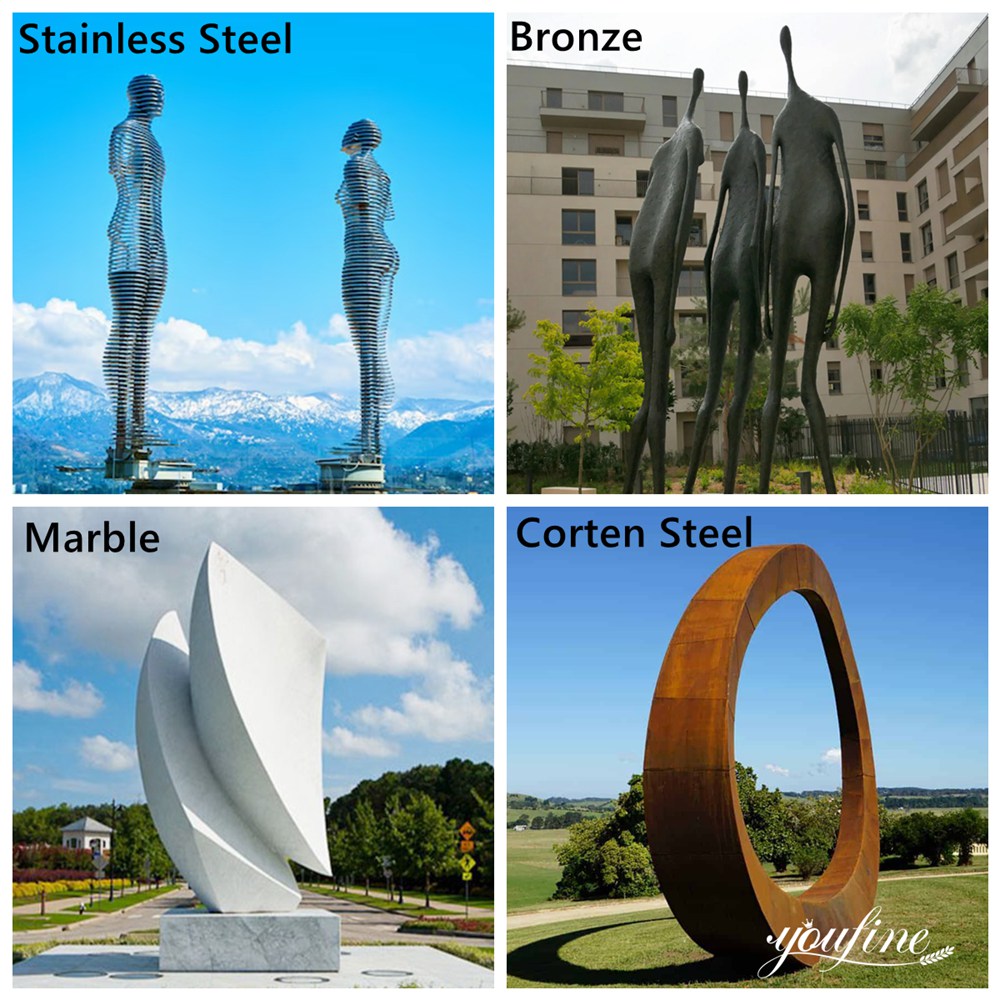
8 Must-Know Famous City Sculptures Around the World
City sculptures are a city’s “cultural calling card,” and many classic works have even become symbols of countries or regions. The following eight famous city sculptures will show you the charm of urban sculptures around the world:
New York’s “Charging Bull”
A symbol of New York’s Wall Street, this 5.3-meter-long, 3.4-meter-tall bronze bull sculpture, with its muscular tones and powerful posture, symbolizes a bull market and wealth, attracting countless tourists each year to touch it and pray for good fortune.
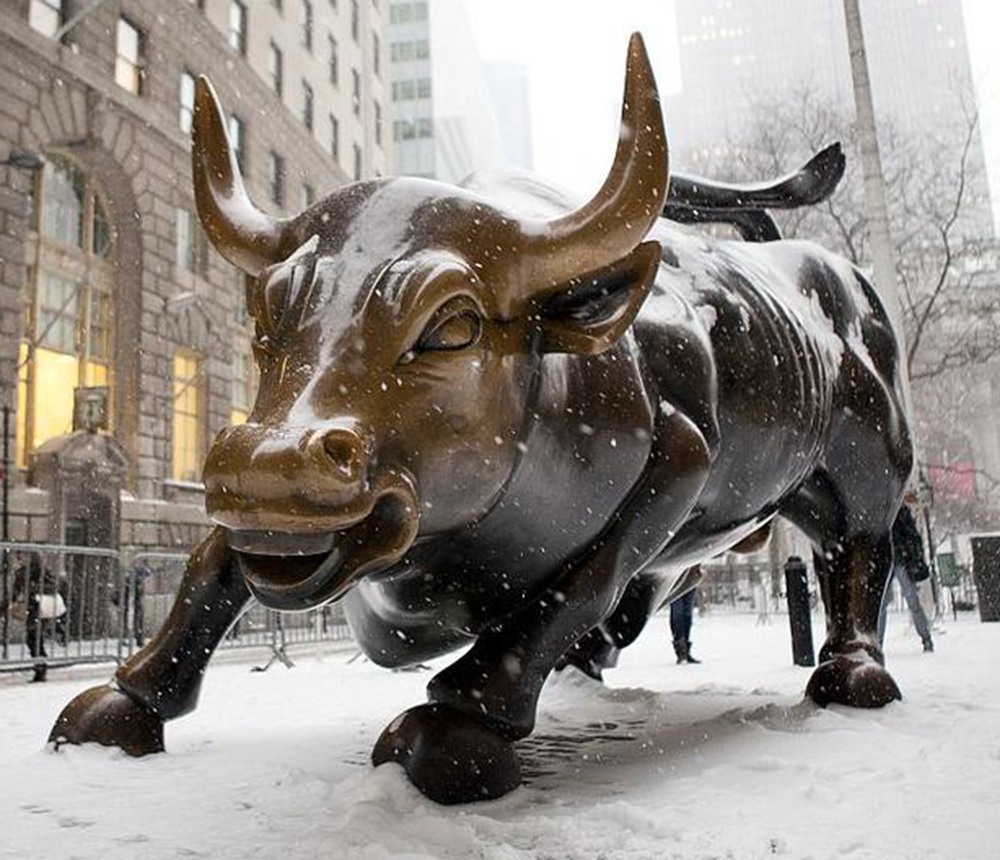
Singapore’s Merlion
One of Singapore’s national symbols, its unique shape, with a lion’s head and a fish’s body, embodies the legend of the Lion City and Singapore’s maritime culture. Standing 8.6 meters tall, with clear water constantly gushing from its mouth, it stands tall on the shores of Marina Bay, becoming one of Singapore’s most recognizable landmarks.
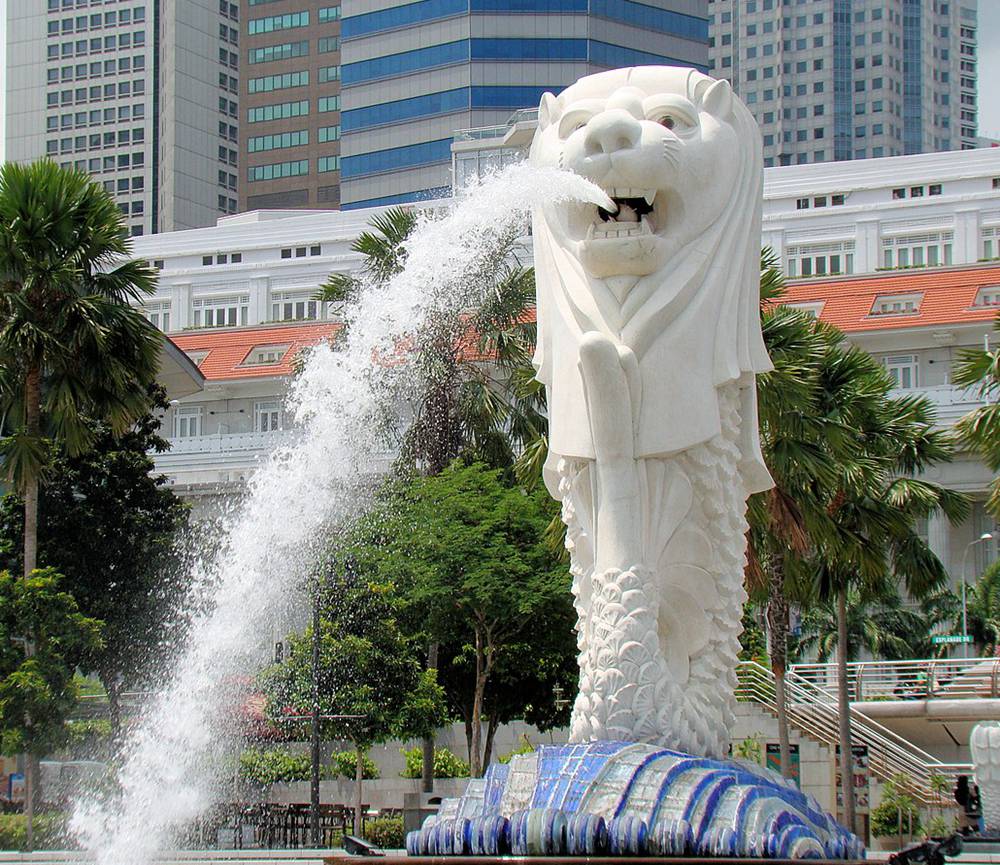
Cloud Gate, Chicago
Designed by British artist Anish Kapoor, this stainless steel sculpture is affectionately nicknamed “Big Bean” by locals for its bean-like shape. Its mirror-like surface distorts and reflects the Chicago skyline and pedestrians, creating a futuristic and interactive experience.
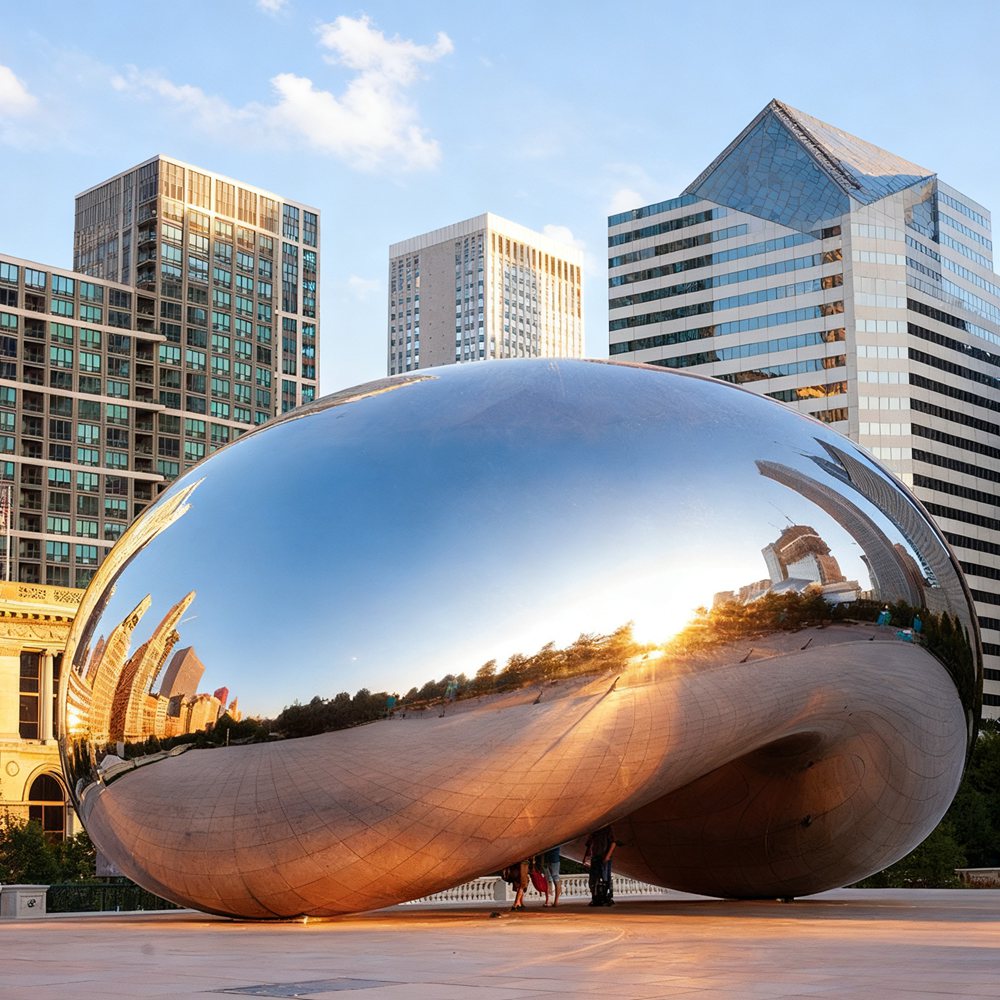
Statue of Liberty, New York
A gift from France to the United States, the 93-meter-tall bronze statue, holding a torch and the Declaration of Independence, symbolizes freedom and democracy. Standing tall at the mouth of the Hudson River, it is not only a New York landmark but also a symbol of the American spirit.
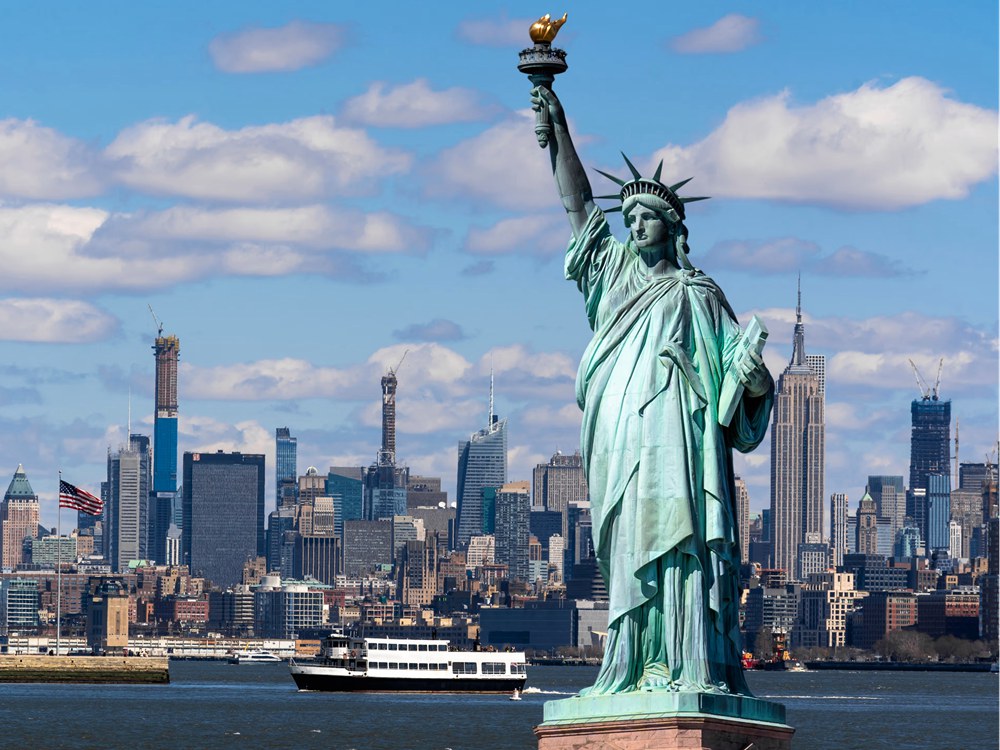
Metropolis, Prague – David Černý
A masterpiece by Czech artist David Černý, this 9-meter-tall sculpture, constructed from 42 layers of stainless steel, evokes an abstract human form. Internally, it incorporates a mechanical mechanism, allowing some parts to slowly move, evoking a metaphorical relationship between the city and the human body.
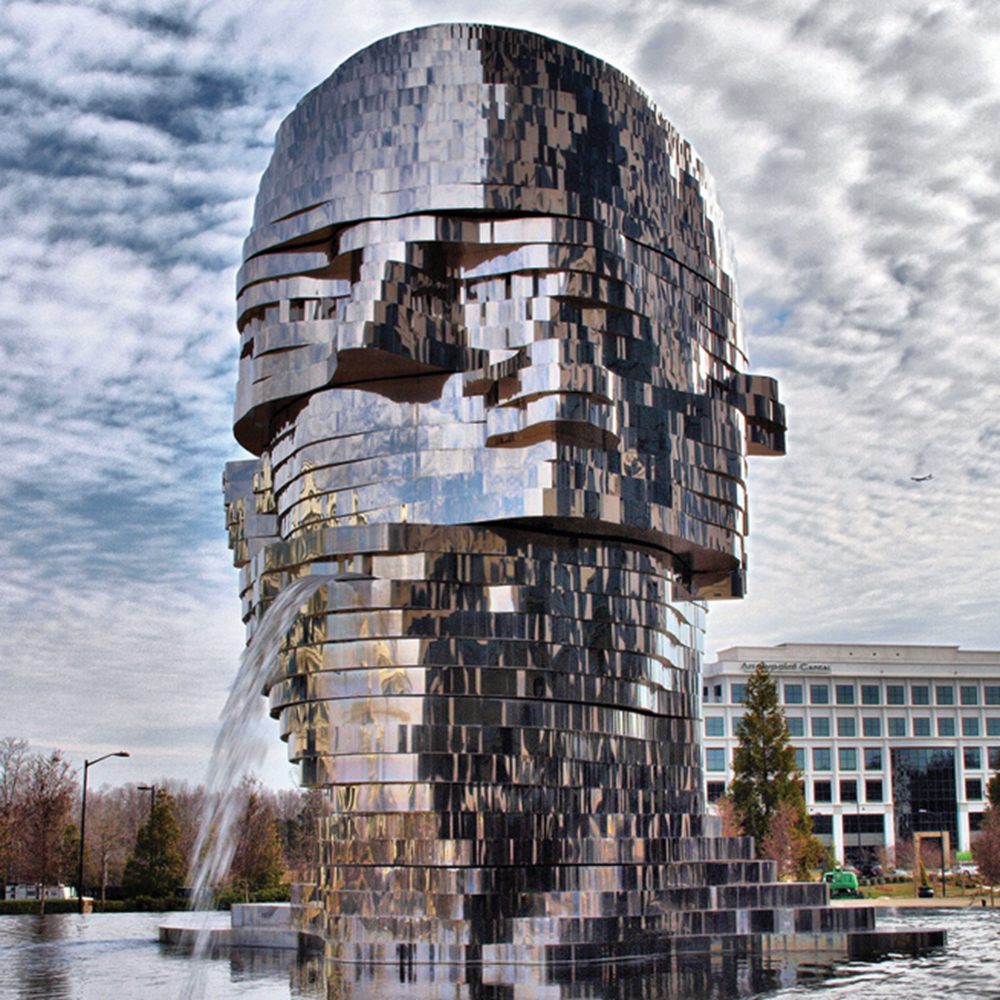
Tokyo’s “Pumpkin” (Yayoi Kusama)
This iconic work by Japanese artist Yayoi Kusama features a vibrant yellow pumpkin dotted with black polka dots, creating a sleek and charming shape. Displayed on the beachfront of Naoshima, Tokyo, the pumpkin complements the sea and sky, becoming a classic symbol of Kusama’s “polka-dot universe.”
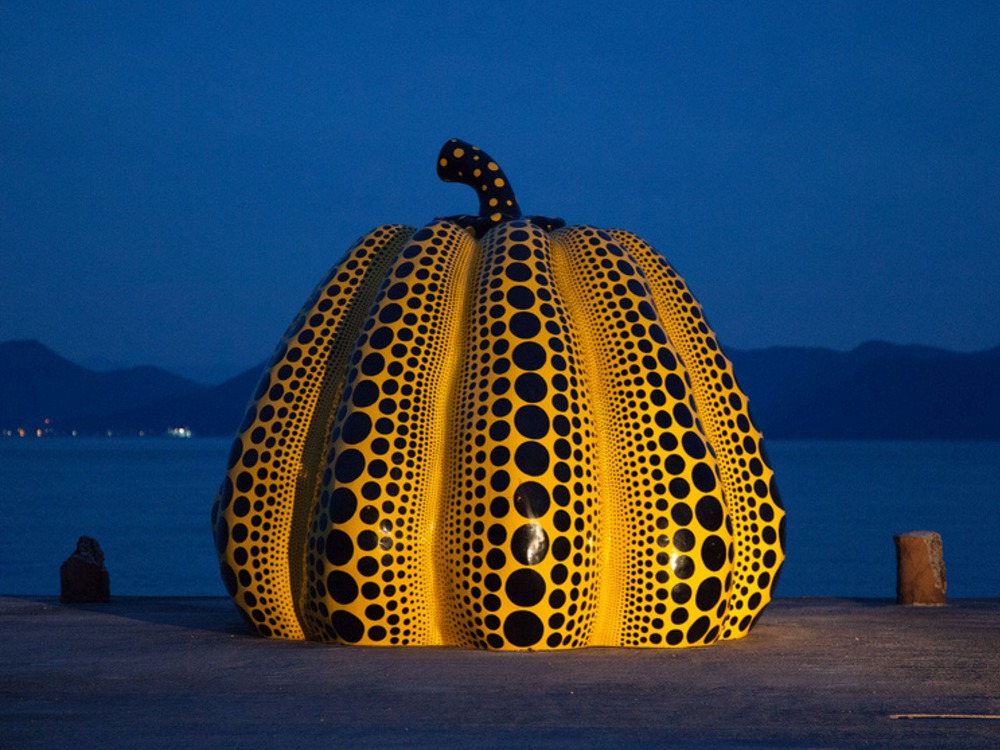
UN Headquarters’ “Non-Violence”
This bronze sculpture, donated by Luxembourg to the United Nations, features a pistol barrel twisted into a figure-eight shape and knotted, visually conveying the message of “stopping war and promoting peace.” Placed in the UN Headquarters gardens, it has become a global symbol of peace-themed sculpture.
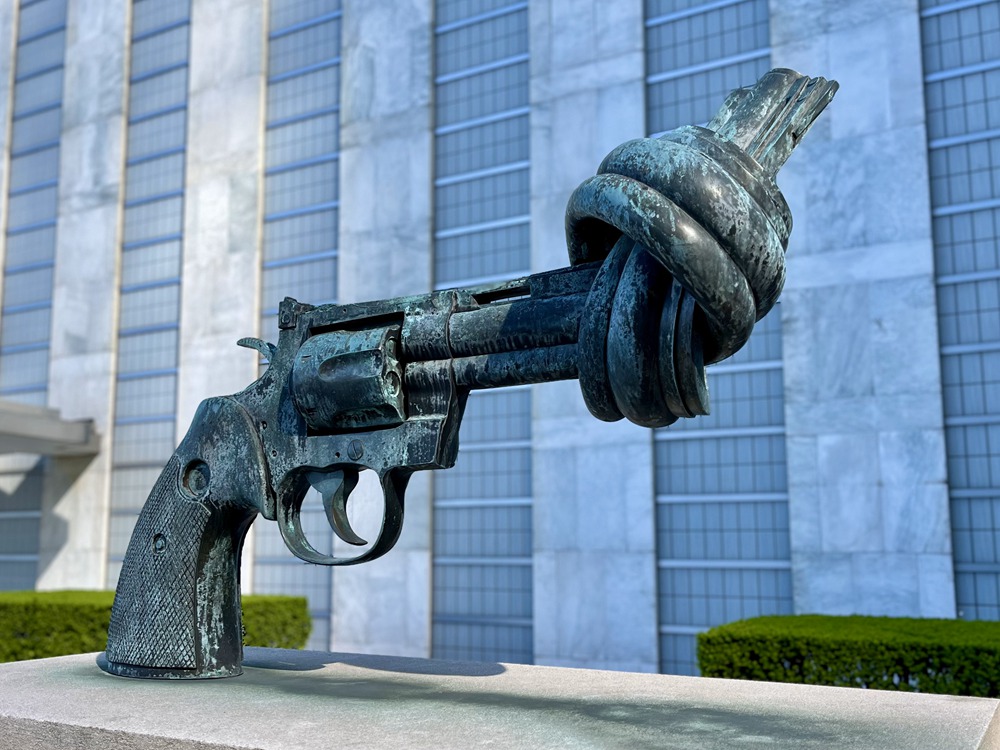
Rio de Janeiro’s Christ the Redeemer
Located atop Corcovado Mountain in Rio de Janeiro, Brazil, the 38-meter-tall statue of Christ, robed and arms raised, overlooks the city, symbolizing fraternity and tolerance. It is a spiritual symbol of Rio de Janeiro and Brazil, and has been listed as one of the New Seven Wonders of the World.
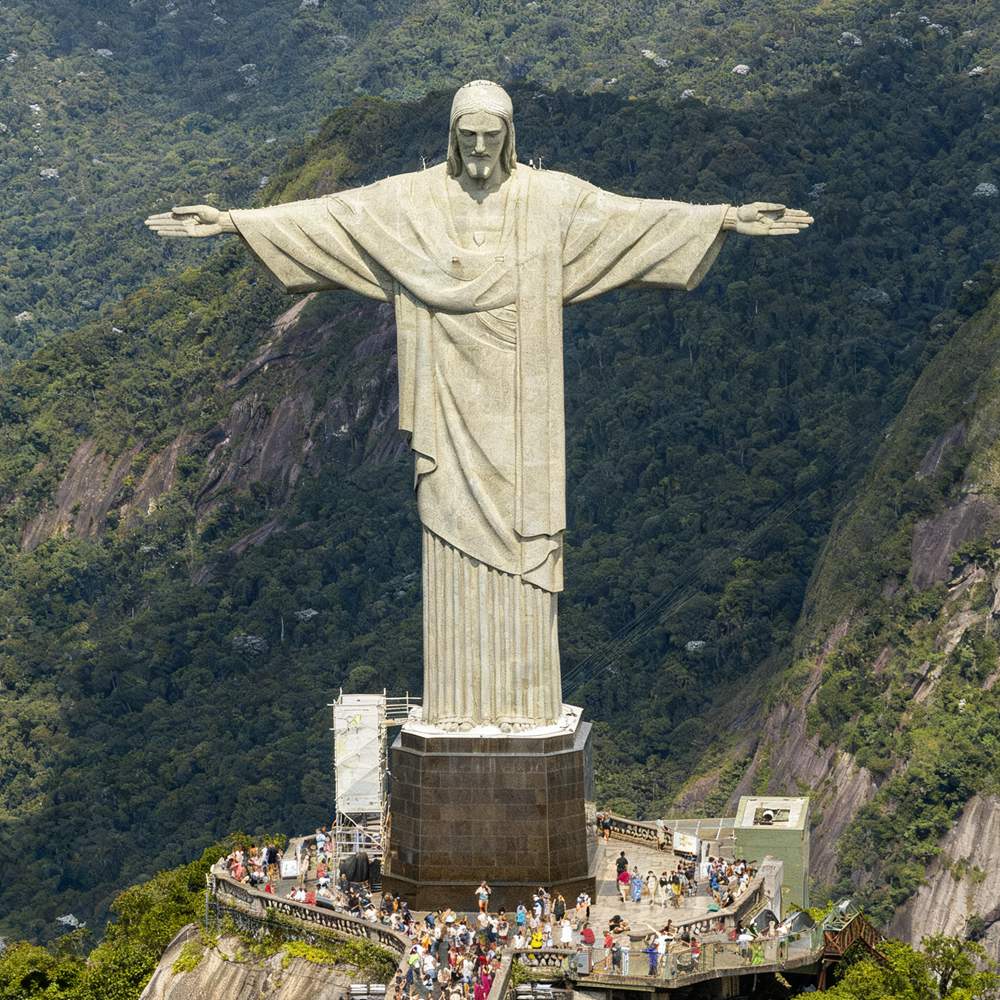
How to Choose the Right Urban Sculpture?
Choosing urban sculpture requires a comprehensive consideration of the site’s needs and multiple factors to ensure the sculpture seamlessly integrates with the urban space:
A: Matching Sculpture Type to the Scene
Squares: Prioritize large sculptures with clear themes (such as monumental and landmark sculptures). Large stone or metal statues, for example, create visual focal points while conveying the city’s cultural heritage.
Subway entrances: Small, lightweight sculptures are suitable. Simple or playful designs are recommended to enhance pedestrian perception, such as creative fiberglass sculptures that avoid occupying excessive pedestrian space.
Art Parks: A variety of sculpture styles are recommended, ranging from abstract modernist works to interactive pop-style sculptures. These can enrich the park’s artistic atmosphere. Materials can include a combination of stone, metal, and fiberglass.
Commercial Complexes: Focus on the sculpture’s decorative and traffic-enhancing qualities. Designs can be stylish, avant-garde, and vibrantly colored (such as stainless steel mirror sculptures or colored fiberglass sculptures). The sculpture’s compatibility with the commercial brand’s tone should also be considered.
B: Key Factors to Consider When Choosing a Sculpture
Size: Determine the size of the sculpture based on the size of the space. Avoid overly large sculptures that appear crowded, or undersized sculptures that lack presence. (For example, a main sculpture in a plaza should be proportional to the plaza area, and sculptures in a commercial atrium should be adapted to the floor height.)
Material: Prefer materials that are weather-resistant for outdoor use to avoid damage from prolonged exposure to wind and sun. For indoor sculptures, consider materials such as fiberglass and resin, focusing on texture and aesthetics.
Weather resistance: Outdoor sculptures should be resistant to high temperatures, extreme cold, and corrosion. For example, salt spray-resistant stainless steel is needed for coastal cities, while for cold cities, a stone that resists frost cracking is needed.
Nighttime lighting effects: Lighting design can enhance the sculpture’s nighttime appeal. For example, stainless steel sculptures can be enhanced with spotlights to highlight the mirrored reflections, while stone sculptures can be enhanced with warm lighting to create an elegant atmosphere.
Budget: Determine your budget based on the material, size, and craftsmanship. Stone and copper are more expensive, while fiberglass is less expensive. Choose the most cost-effective option within your budget.
Cultural theme: The sculpture should align with the cultural theme of the city or space. For example, choose classical sculptures for historic districts, or modern minimalist sculptures for science and technology parks to avoid any sense of incongruity.
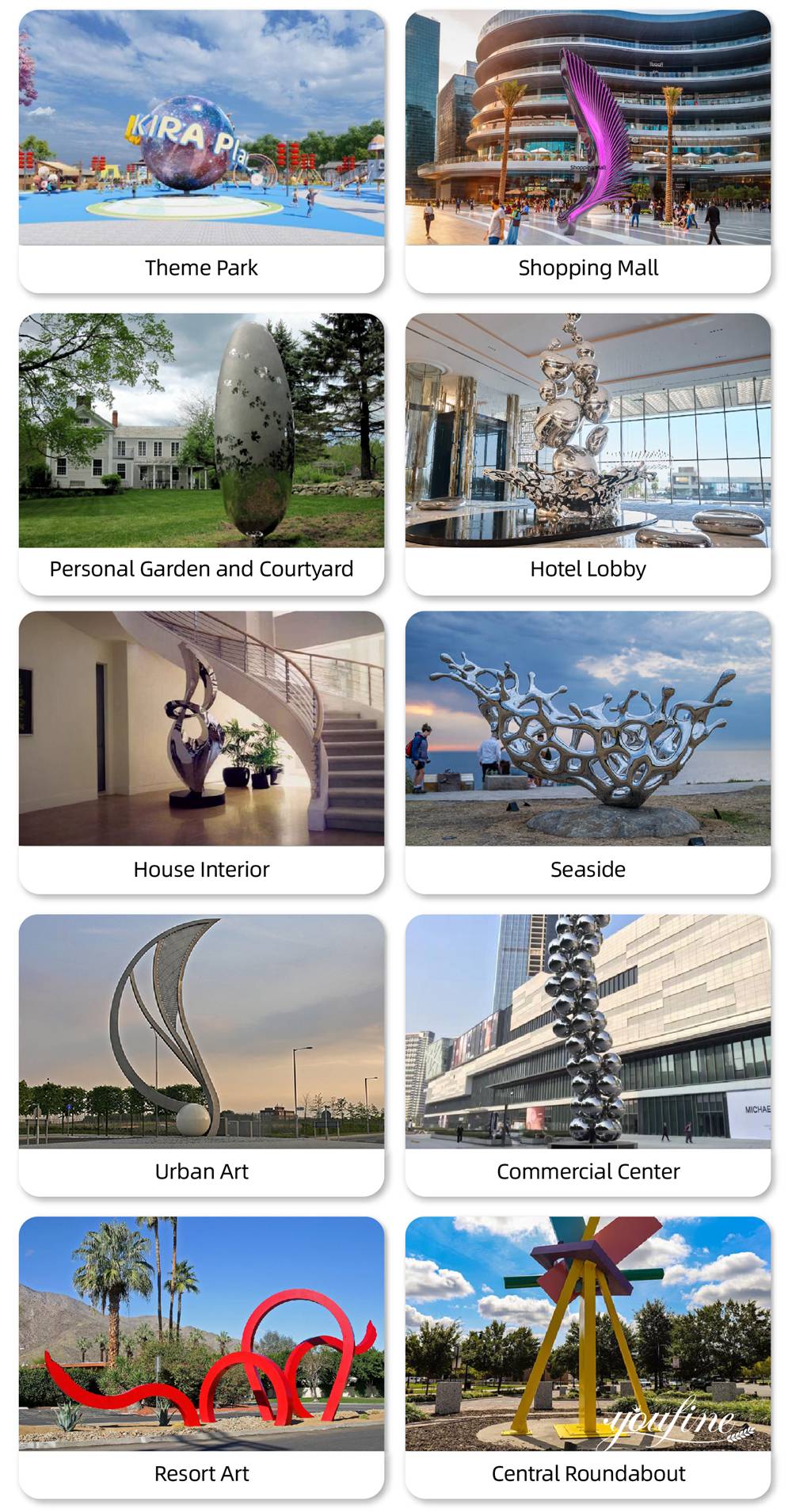
How to Commission a Custom Urban Sculpture?
If you need a custom urban sculpture, whether you’re designing it yourself or providing creative ideas, choosing a reliable factory and clarifying your core requirements are crucial:
A: Choosing a Trustworthy Factory
Prioritize your factory’s qualifications, track record, and production capacity.
Check whether they have experience with large-scale urban sculptures. Inquire about their material sourcing channels, craftsmanship, and post-installation services.
Avoid choosing unqualified and inexperienced workshops, which could result in substandard work.
B: Considerations for Self-Design
If you’ve already finalized your sculpture design, focus on the similarity and workmanship of the sculpture.
Provide detailed design drawings (including dimensions, materials, and color requirements) and request a sample for verification to ensure the final product matches your design.
Also, pay attention to detailed workmanship, such as the marble carving veins and metal welding and polishing, to avoid rough finishes that could detract from the overall aesthetic.
Furthermore, confirm the factory’s post-installation services in advance to ensure the sculpture is safely and securely installed.
C: Considerations for Providing Ideas and Having the Factory Design
If you only provide creative ideas (such as a theme, style, or approximate dimensions), prioritize the factory’s design capabilities:
Review the factory’s past design cases to see if they can accurately understand and translate your ideas.
Also, clarify design fees to avoid future disputes.
During the communication process, be sure to clearly outline your requirements (such as the setting, cultural theme, and budget). Allow the factory’s designers to provide multiple options for selection. Once a plan is confirmed, proceed to the production phase.
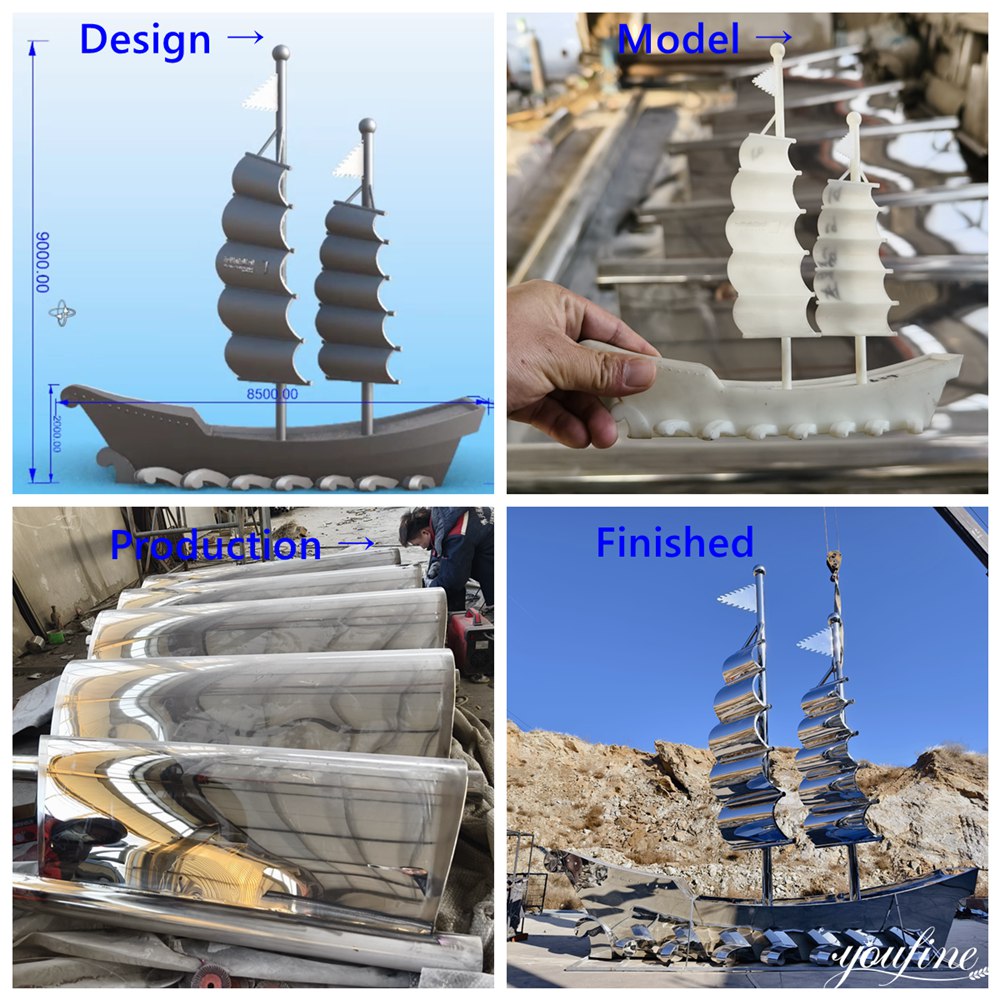
If you have any purchasing or customization needs for urban sculptures, please feel free to contact us. YouFine has a professional design team and an experienced production factory, and can provide one-stop services from creative design, material selection, to production and installation, to create a unique work of art for your urban space!


